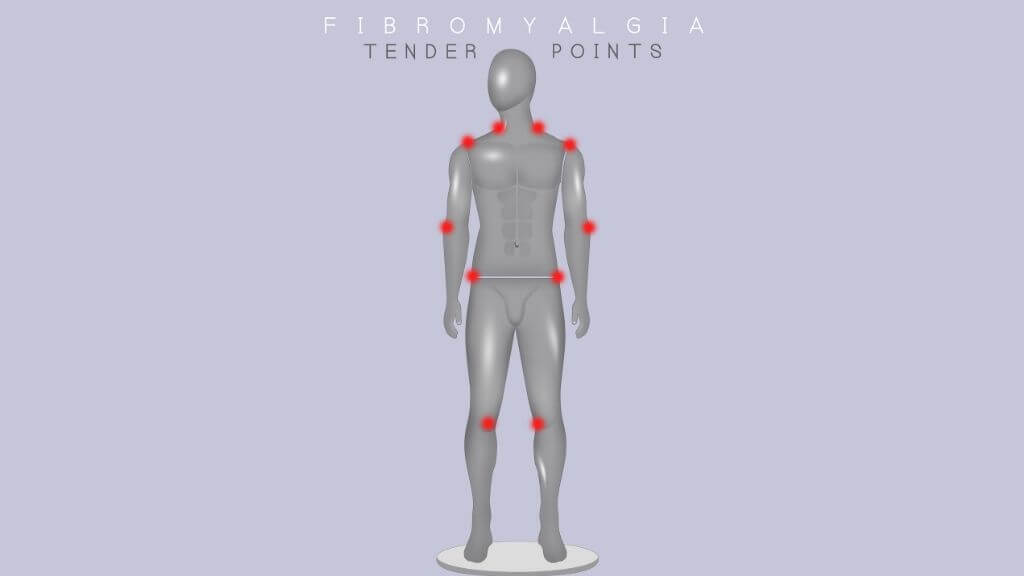Fibromyalgia is a condition that causes pain, tenderness in areas, and fatigue. These symptoms are so similar to those presented by other diseases that it can be challenging to diagnose.
There is also some skepticism among medical professionals as to whether it is a real condition or not. The lack of reproducible results contributes to this controversy, but there are an estimated 5 million individuals currently diagnosed with fibromyalgia, so it seems very real.
There is not a known cause of fibromyalgia, but researchers have been studying it for years, and they’re beginning to narrow down on the contributing factors.
Infections can trigger fibromyalgia or worsen symptoms
♦ Genetics do play a role, although specific genes have yet to be identified
♦ Trauma, be it physical or emotional, can lead to the development of fibromyalgia, as it has been linked to post-traumatic stress disorder.

There are also risk factors such as stress, injuries, and systemic infections that can worsen flare-ups. It is also more common among elderly individuals and those who suffer from autoimmune conditions such as rheumatoid arthritis and lupus.
Fibromyalgia is associated with pain in certain areas called trigger points across the body. The pain is described as dull and affects many parts of the body.
If you experience it for more than three months, you should speak to your doctor about getting tested. The common trigger points are the back of the head, tops of shoulders, upper chest, hips, knees, and outer elbows. People often report feeling fatigued, depressed, anxiety, trouble sleeping, and an inability to concentrate.
There are no lab tests that definitively diagnose fibromyalgia. Your doctor will look at your medical history, examine the trigger points, and possibly run tests to rule out other causes for your symptoms. A diagnosis will be made if the pain is widespread, has been consistent for months, and is disrupting your daily life.
The goal for treatment is to manage pain and improve quality of life, and this involves both self-care and medication. The common medications used for fibromyalgia treatment include pain relievers like ibuprofen or even stronger prescription versions if needed.

Antidepressants help alleviate depression and anxiety symptoms commonly associated with fibromyalgia. Anti-seizure drugs are also used despite being originally developed for epilepsy.
There is no specific diet for fibromyalgia, but avoiding certain foods and eating others has been shown to improve symptoms, mood, and well-being. A proper diet will keep your body healthy, maintain a healthy weight, and supply a constant stream of energy. Ideally, you want to eat plenty of fresh fruits and vegetables, drink plenty of water, eat more plants than meat (eat lean meats if you have to), and reduce sugar intake.
The best foods for energy include almonds and other nuts or seeds, beans, tofu, oatmeal, avocado, leafy greens, and broccoli. Make sure you avoid FODMAPs, which are carbohydrates fermented in the gut that can cause digestive issues, gluten, and food additives or artificial sweeteners and flavorings. You also want to stay away from exotoxins like MSG, which can trigger pain symptoms.
Standard treatments like medications work for pain and symptom relief, and there are also several natural options you can try too.
♦ 5-HTP: This is a natural amino acid supplement that helps your body produce serotonin, which as a result, provides relaxation, improves stiffness, fatigue, and anxiety.
♦ SAMe: This is a natural molecule produced in your body that relieves pain, morning stiffness, and fatigue. It may be low in those with fibromyalgia, so supplements are available.
♦ Tai Chi: This ancient and gentle Chinese practice improves posture, core strength, flexibility, and mood. All of these benefits relieve fibromyalgia symptoms and can improve quality of life.
♦ Relax: You can also promote overall relaxation to relieve fatigue and aching muscles with yoga, meditation, acupuncture, and getting a good night sleep every night.

There are different types of fibromyalgia pain that are worth noting. An individual with fibromyalgia can have any combination of these at any given time, and this can also vary as time goes by.
♦ Hyperalgesia: this essentially is excessive pain, and it is caused by the brain amplifying regular pain signals, so they register as more severe.
♦ Widespread muscle pain: Persistent muscle and soft tissue pain (similar to when you have the flu) is common and mostly affects the lower back, shoulders, and chest wall.
♦ Joint pain: The aching and swelling of joints, specifically in the TMJ (temporomandibular joint) that connects your jaw to your skull. Unlike arthritis, however, there is no actual inflammation.
♦ Allodynia: The skin is sensitive to touch, and clothing or gentle massages can cause pain.
♦ Neuropathic pain: Odd nerve sensations such as tingling, crawling, burning, and itching are common fibromyalgia complaints. No nerve damage is detected during testing, but the sensations are painful.
♦ Abdominal pain: Those with fibromyalgia are more likely to develop irritable bowel syndrome and experience cramping, bloating, and irregular bowel movements. Acid reflux is also common, along with pelvic pain and bladder discomfort.
♦ Fibromyalgia is one of the most common chronic pain conditions.
♦ The disorder affects an estimated 10 million people in the United States.
♦ It occurs in men, women, children, and the elderly
♦ The disorder is often seen in families, among siblings, and mother and children.
♦ Diagnosis is typically made between the ages of 20 and 50, but incidences rise with age.
Fibromyalgia is one of the most common conditions listed by those seeking disability. It is possible to get disability benefits, but it can take time because of the process it takes to verify and confirm a diagnosis.
With some doctors being skeptical of the disease, it may be challenging to find one that will provide supporting documentation that it is causing you a disability. You must be experiencing severe pain, have had the symptoms for a long time, and not be able to lead a normal life in order to be approved for disability.
Fibromyalgia is hard to identify in children, but it does happen. It is seen more in boys than girls, and the condition is typically diagnosed in children between the ages of 13 and 15.
One of the main symptoms in children is sore spots on their muscles that are tender to touch. With fibromyalgia, the child will usually have five of these spots, and they will have had the pain for several months. They are more prone to fatigue, depression, restlessness, and insomnia.
There is no cure for fibromyalgia, so treatment focuses on relieving symptoms and improving quality of life. With the combined approach of self-care, lifestyle changes, and medications, you can live more comfortably with fibromyalgia, so the outlook is a positive one.
Researchers continue to look for a cure, but this involves truly understanding the disease and its causes, which continue to remain mysterious.





















